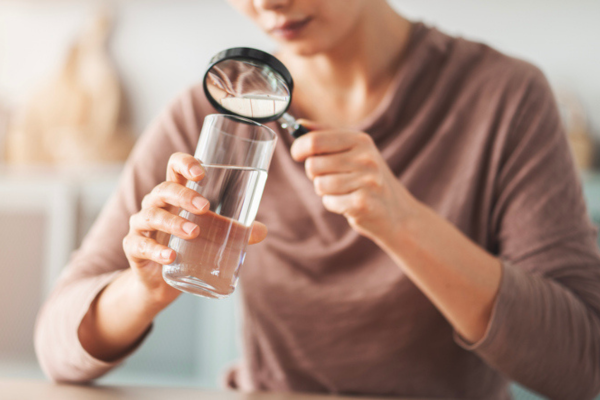Best pipe materials for chlorine‑treated drinking water in Australia
Our water services use chlorine to kill bacteria that may cause disease and to deliver good-quality water. They test for the residual level of chlorine that must be present to make sure that water is disinfected all the way to your tap. John Fennell explains.
All pipe materials need to be capable of delivering clean disinfected water. However, some pipe materials have a better tolerance to chlorine than others and some pipe materials are adversely affected by high chlorine levels that significantly reduce their service life. Copper and most metals are unaffected by chlorine at the levels used by the network providers and are also unaffected by the high levels of chlorine that are occasionally used to rectify issues that can occur due to contamination, infections and times of poor-quality feed water such as during droughts or floods.
How does chlorine work and how much is in our water?
Chlorine does not break down at all; it is an element so it can only combine to form molecules within the water, or it dissipates as a gas into the atmosphere once it is released from your tap. When under pressure in the plumbing system, chlorine cannot be released and stays in the system. Only when the water is at normal atmospheric pressure can the free chlorine gradually be released to the atmosphere. The rate at which chlorine reacts increases at higher temperatures.
Three things can happen when chlorine is added to water:
- Some chlorine reacts through oxidisation with organic matter and the pathogens in the water and kills them. This portion is called consumed chlorine.
- Some chlorine reacts with other organic matter and forms new chlorine compounds. This portion is called combined chlorine.
- Excess chlorine that is not consumed or combined remains in the water. This portion is called residual free chlorine. The residual free chlorine helps prevent recontamination of the treated water.
When used as a disinfectant, the residual free chlorine in major Australian reticulated supplies ranges from 0.1mg/L to 4mg/L, with typical concentrations in the reticulation of about 0.2mg/L to 0.4mg/L. Based on health considerations, the guideline value for the maximum total chlorine in drinking water is 5mg/L. In some hotter climate zones of northern Australia, the residual free chlorine may have to be at higher levels to combat the faster degradation of the chlorine due to the high temperatures.
Chlorine has an odour threshold in drinking water of about 0.6mg/L, but some people are particularly sensitive and can detect amounts as low as 0.2mg/L. Water authorities may need to exceed the odour threshold value of 0.6mg/L in order to maintain an effective disinfectant residual, so occasionally or in some areas you may smell chlorine in the drinking water. The chlorine level present at any residence may vary due to the flow rate of the water in the system, your proximity to the water treatment plant and during maintenance periods. Some cities such as Melbourne have had to install secondary disinfection stations for those areas that are a long way from the primary disinfection stations in order to maintain the chlorine residual throughout the network.
Chlorine is consumed and dissipated quicker in hot water than in cold water but there is still chlorine present for many hours after heating is commenced, and with the increasing use of instantaneous water heaters, the loss of chlorine is negligible.
The Department of Health recommends that any water supplies not provided by a licensed drinking water service provider be professionally tested and treated before it is used for domestic purposes such as drinking, bathing or cooking.
Effect of chlorine on pipe work
Whilst chlorine is used to protect us from bacteria contaminating our drinking water, the presence of chlorine at varying levels can affect the life of the pipework depending upon the material used. It’s important that the pipe material used can withstand these varying levels and that the product is guaranteed to work in those conditions for the design life of the services.
Copper has proven to perform very well over the long term with the chlorine levels typically found in Australian drinking water, and is also unaffected by the chlorine levels for disinfection of Water Services from storage tanks as specified by AS/NZS 3500.1 Appendix H that requires dosing at levels resulting in a residual free chlorine level of 10mg/L after a retention period of six hours.
With some plastic piping, chlorine can cause oxidation on the inner wall of the pipe. To battle the effects of chlorine, manufacturers have added antioxidants to the plastic piping. The antioxidants are provided for sacrificial purposes where the chlorine, and other oxidisers, will degrade the antioxidants first. Once these antioxidants are all degraded, the plastic piping is no longer protected, and the piping will start to degrade more quickly.
In some hotter climate zones of northern Australia where chlorine is used as the disinfectant and the residual free chlorine concentration typically exceeds the Australian Drinking Water Guidelines, limitations are placed on the minimum wall thickness and pressure rating of some plastic pipes. This is stipulated in AS/NZS 3500.1:2024 Water Services appendix I.
Care must be taken to ensure that the pipe material specified for an installation and the conditions under which the system will operate are compatible. To ensure that the material will last for the design life of the system, which is usually greater than that covered by the guarantee. Copper tube is the tried and tested product that withstands the conditions and chlorine levels of Australian drinking water and ensures longevity of your system.
John Fennell is the chief executive of the International Copper Association Australia. Click HERE for more details.

